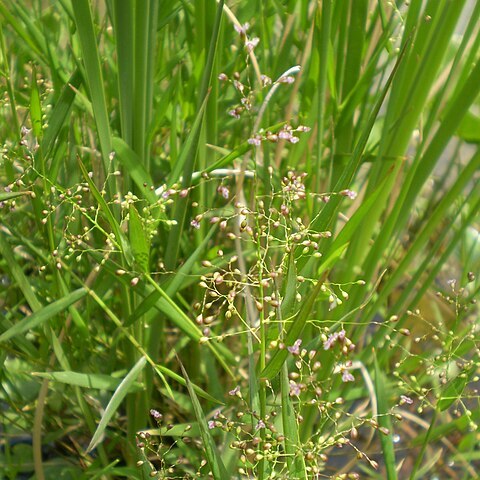Perennial. Culms slender to moderately robust, erect or decumbent and rooting at lower nodes, up to 80 cm tall, nodes glabrous, eglandular or with glandular ring. Leaf sheaths shorter than internodes, glabrous except for ciliate outer margin; leaf blades narrowly lanceolate, 3–10 × 0.4–0.8 cm, glabrous, scabrid, base rounded, apex acute; ligule 1–2 mm. Panicle open, ovate in outline, 4–11 cm, glandular, many-spiculate; branches and pedicels filiform, flexuose; pedicels variable in length, shorter or longer than spikelets. Spikelets elliptic-globose, 1.5–2(–2.2) mm, greenish or purplish brown; florets slightly to clearly dissimilar; lower floret male, upper floret female; glumes subequal, as long as or shorter than florets, broadly elliptic, 5–7(–9)-veined, usually glabrous, rarely hispidulous or scaberulous above middle, apex broadly rounded; lower lemma oblong, cartilaginous to subcrustaceous, shallowly convex, back sometimes sulcate, smooth, glabrous; anthers 0.8–1.3 mm; upper lemma crustaceous, shorter and more convex, slightly rough, back glabrous or puberulous, upper margins ciliate. Fl. and fr. summer to autumn. 2n = 60.
A grass which keeps growing from year to year. It grows 30-70 cm high. It forms loose clumps. The stems are trailing and form roots at the nodes. The leaves are 2-10 cm long by 0.3-0.8 cm wide. They are narrowly sword shaped. They are dark green and slightly roughened. The leaves are scattered along the stalk and at right angles to it. The flower heads are 6-12 cm long and 4-6 cm wide. They are open and with many branches. The spikelet is 0.2 cm long. It is purplish.


